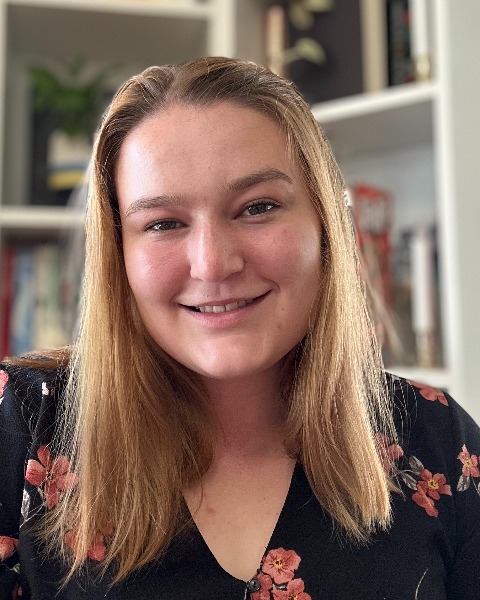Tissue Engineering
Neural Tissue Engineering
Development of an in vitro neurovascular niche model with physiologically-active neurons
Saturday, October 26, 2024
8:45 AM - 9:00 AM EST
Location: Room 314

Abigail Ecker (she/her/hers)
PhD student
Northeastern University
BOSTON, Massachusetts, United States
Guohao Dai, PhD
Professor of Bioengineering
Northeastern University
Boston, Massachusetts, United States
Presenting Author(s)
Primary Investigator(s)
Introduction: Neurodegenerative diseases (NDs) are a group of devastating diseases including Alzheimer’s Disease (AD), Parkinson’s Disease, multiple sclerosis, and more that are characterized by neuronal dysfunction and cell death that results in progressive cognitive decline and eventual death of the patient. AD alone impacts over 6 million in the United States alone and remains without a cure. One major roadblock in the development of new pharmaceuticals to treat and cure NDs is a lack of pre-clinical models that can predict efficacy in humans. Recently, there has been a push to develop humanized in vitro neurovascular niche (NVN) models to address this translation crisis and assist in pre-clinical efficacy assessment. The neurovascular niche (NVN) is a brain microenvironment that contains microvasculature formed by brain microvascular endothelial cells (BMECs) supported by pericytes (PCs) and astrocytes (ACs) and neighboring neurons and microglia. Incorporating neurons in the model has been attempted, but neurons are difficult to culture with low viability upon isolation. Here, we present the development of an in vitro NVN model in a microfluidic device platform (MFD) with microvascular networks supported by ACs and PCs, and neural stem cells (NSCs) which directly differentiate into physiologically-active neurons inside the model. Additionally, we present our efforts to use recent gene editing technology prime editing (PE) to install a single-point mutation in the PSEN1 gene that is associated with aggressive, early-onset AD. The use of this diseased cell line in our NVN model will create an in vitro AD model.
Materials and
Methods: Neural stem cells (NSCs) were differentiated from human embryonic stem cells (hESCs) using a kit from Stem Cell Technologies. The neural stem cells were transduced with lentivirus to express the jGCaMP8 gene (GC-NPCs), which is a genetically-encoded calcium indicator that fluoresces green with influx of calcium into the cell. Then, human umbilical vein endothelial cells (HUVECs), transduced to express ubiquitous tdTomato (tdTom-HUVECs) were cultured with ACs, PCs, and GC-NPCs in a MFD supported by a fibrin hydrogel (Aim Biotech). Interstitial flow was applied in the MFD to encourage vessel formation and neuronal cell survival. Periodically throughout the culture period, jGCaMP8 signal was assessed using live time-course imaging for GFP expression. After 10 days, the cultures were fixed with 4% paraformaldehyde and ICC was performed to label neurons (Tuj1).
For prime editing, a plasmid containing the PE system (nCas9 nickase, reverse transcriptase, and GFP reporter) (Liu, D.; Addgene) and a plasmid containing our designed prime editing guide RNA (pegRNA and mCherry reporter) to complete the mutation were co-transfected into induced pluripotent stem cells (iPSCs) using lipofectamine stem. Then, GFP+/mCherry+ cells were enriched using fluorescence-activated cell sorting (FACS) and clonal expansion of single-cells was performed. Future sequencing and characterization of a properly mutated cell line is needed to validate the relevance of the line in an AD model, including differentiating iPSCs into neurons and assessing amyloid beta 42 and phosphorylated tau burdens, the two hallmark pathologies of AD.
Results, Conclusions, and Discussions: Vascular networks visible by tdTomato expression are formed by Day 6 and had connected branches (Figure 1b). By Day 10, the blood vessels had begun to regress, shrinking in diameter and an overall loss of vessel-containing space (Figure 1b, quantified data not shown). GFP fluctuations (jGCaMP8) were visible by Day 6 through Day 10 in our cultures, indicating the embedded NSCs were differentiated into physiologically-active neurons (Figure 1d, e). After fixation and staining with Tuj1, we saw that the neurons and their extended neurites had largely localized close to the remaining blood vessels (Figure 1c). The neurons and vasculature have organized to be in close proximity, supporting the idea that there is neurovascular coupling (NVC) occurring in our model.
In this work, we have established a self-organized, human neurovascular niche model with blood vessels supported by ACs and PCs and physiologically-active neurons surrounding the vasculature. We show preliminary data that may indicate that neurons have increased maturity and survivability in closer proximity to the vasculature in our model. While more research is needed to further elucidate this phenomenon, neurovascular coupling is highly implicated in brain health and disease and it is exciting that our model may capture these effects. In the future, we hope to increase the stability of the vessels to support a longer culture period by optimizing culture conditions. The model presented here may serve as a platform for future disease models and eventually, support the development of more robust in vitro pre-clinical models for use in the drug discovery field. Our ongoing work to install a PSEN1 mutation to create an AD neuron cell line will be beneficial in disease modeling and further elucidating the impact of AD neurodegeneration on neurovascular coupling and the neurovascular niche.
Acknowledgements (Optional):
